Weird Poland
It’s official: Poland is wonderfully weird.
Did you know that Poland has a vast array of unusual statues? A young boy with an erection, the monument of a faithful dog, and they even have the world’s largest Jesus.
At first, we discovered a few little oddities and thought nothing of it. And then, after a bit of research, we realized that it is actually an epidemic.

Our Experience
A quick search on “weird Poland” brings up all sorts of quirky oddities and bizarre facts about the country. If only we’d known beforehand, we could have turned our entire tour into a delightfully “weirdly” themed adventure!
Imagine diving into Poland’s most peculiar sights and stories—it would have been an eccentric journey like no other.
Visiting Poland
How To Get There
By Air: Most travelers fly into Poland, with Warsaw Chopin Airport (WAW) and Kraków John Paul II International Airport (KRK) being the primary international gateways. Direct flights from major cities in Europe, North America, and Asia are widely available. Budget airlines also offer numerous options for European travelers.
By Train: Poland is well-connected by rail to neighboring countries. You can take international trains from Germany, Czech Republic, Slovakia, Ukraine, and other nearby countries. The high-speed EuroCity and InterCity trains are comfortable and efficient.
By Bus: International bus services like FlixBus and Eurolines provide affordable and frequent routes to Poland from various European cities. This can be a cost-effective but longer travel option.
When To Visit
The ideal time to Poland, varies depending on your personal preferences. Most people prefer the warmer months of summer.
Spring (April to June): Spring is a delightful time to visit Poland, with blooming flowers and pleasant weather. Tourist crowds are smaller, making it a great time to explore cities and countryside alike.
Summer (July to August): Summer is peak tourist season in Poland. The weather is warm, festivals are abundant, and outdoor activities are in full swing. Coastal areas and lakes are popular destinations, but cities like Warsaw and Kraków can be crowded.
Autumn (September to October): Autumn offers mild weather and beautiful fall foliage. This is a great time for hiking in the Tatra Mountains or enjoying the harvest season in rural areas. Tourist spots are less crowded, providing a more relaxed experience.
Winter (November to March): Winter in Poland can be cold and snowy, but it’s a magical time for visiting Christmas markets, enjoying winter sports in the mountains, and experiencing traditional Polish winter festivals. Cities are less crowded, and you can often find lower prices on accommodations.
Tips for Planning Your Visit
Check Visa Requirements: Depending on your nationality, you may need a visa to enter Poland. Schengen visa rules apply.
Language: Polish is the official language, but English is widely spoken in tourist areas.
Currency: The currency is the Polish złoty (PLN). Credit cards are widely accepted, but it’s good to have some cash for smaller towns and markets.
Cultural Etiquette: Polish people are known for their hospitality. It’s customary to greet with a handshake, and it’s polite to use formal titles until invited to use first names.
The Crooked House (Krzywy Domek)
The most photographed building in the whole country is the crooked house in the northern town of Sopot, designed in tribute to a local children’s book illustrator.
More mysterious is the crooked forest in the northwestern part of the country, where approximately 400 trees all have oddly similar shapes.
It is believed that some sort of human technique forced their awkward growth, but the methods or rationale are not known. Two theories: that they were deliberately shaped to use the odd structures in ship building, or they were caused by being run over by tanks in WWII (the trees snapping at the stem but still enduring).
The Crooked Forest (Krzywy Las)
Located near Gryfino, this forest is filled with 400 pine trees that mysteriously grow with a 90-degree bend at their base.
Theories abound, from heavy snowfall to human manipulation, but no one knows for sure why they grow this way.
Perfect for a surreal nature walk!
The Upside Down House (Dom Do Góry Nogami)
Built in 2007, this upside down house was designed to represent the uncertainty facing Poland after the end of communism.
It apparently took five times longer than a normal house to construct, largely because of the disorientation felt by the builders.
(So disappointed we only learned about this place after we had left the region.)
The Chapel of Skulls (Kaplica Czaszek)
Nestled in Czermna, the Chapel of Skulls is Poland’s eerie gem. This 18th-century ossuary, crafted by Czech priest Václav Tomášek, houses the bones of over 3,000 people, with 21,000 more in the crypt below.
Victims of wars and plagues, their remains create a haunting yet artistic display. This bone-filled chapel isn’t just spooky decor—it’s a memento mori, reminding visitors of life’s fleeting nature.
For a touch of the macabre and a history lesson, the Chapel of Skulls is a must-see. It’s both eerie and fascinating, reminding visitors of the fragility of life.
The Warsaw Mermaid
The entire country is ripe with curious legends, and the mermaid of Warsaw is a popular one.
She graces the coat-of-arms for the city, and her likeness can be found scattered throughout landlocked Warsaw (any mermaid statues we have previously seen were in coastal cities).
Legend has it that she made it to the area via river, and liked it so much she settled. A rich merchant trapped her, but a young fisherman saved her, and she vowed to protect the city with her sword and shield.
The Basilisk
Few creatures have evoked more fear for longer than the basilisk, a terror throughout Europe and North Africa for centuries. This legendary beast was a peculiar hybrid: a crested snake said to hatch from a rooster’s egg and incubated by a toad.
The monster once guarded treasure within the building and turned any man who tried to reach it into stone.
He was defeated in the end by a tailor who showed the monster a mirror – he was so disgusted with how he looked that he has since gone into hiding.
(No word on what happened to the treasure 🙂 )
The Witch’s House (Dom Czarownicy)
Nestled in the quaint town of Byczyna, Dom Czarownicy is an intriguing attraction that whispers tales of medieval Poland. This eerie yet fascinating site is believed to have been a place where alleged witches were once tried and executed.
Today, it serves as a museum dedicated to the dark history of witch trials in Poland. Visitors are drawn to its spine-chilling exhibits, which include ancient torture devices, historical documents, and artifacts related to witchcraft.
The atmosphere is both educational and haunting, offering a unique glimpse into a grim aspect of Polish history. Dom Czarownicy isn’t just about the macabre; it also delves into the folklore and myths surrounding witchcraft, making it a captivating stop for history buffs and fans of the supernatural.
So, if you’re exploring the hidden corners of Poland, this house of this Polish woman promises a spellbinding experience.
The Floating Pig
The Floating Pig in Poland is an eccentric and whimsical art installation that can be found in the city of Wrocław.
This peculiar sight features a pig sculpture seemingly levitating above the ground, capturing the imagination of all who encounter it. The installation is a nod to the city’s penchant for quirky public art and adds a playful element to the urban landscape.
Visitors are drawn to this unusual attraction not just for its oddity, but also for the photo opportunities and the fun, lighthearted atmosphere it creates. If you’re touring Wrocław, this floating swine is a must-see for its sheer novelty and the smiles it brings.
A local tour guide had no idea what it was, but a Polish person told us it symbolized cleansing. The pig, set in a position to be lit ablaze, signifies renewal. Apparently.
Neon Museum (Muzeum Neonu)
In Warsaw’s Praga district, this museum is dedicated to preserving and showcasing the neon signs from Poland’s Communist era.
It’s a colorful trip down memory lane and a testament to the vibrant Polish history.
Where to Stay
High-end
According to a review of the luxury Hotel Bristol in central Warsaw, the Sunday Brunch is a must! The front-facing rooms offer a lovely view, and the rooms are very spacious. It’s a “truly extraordinary 5-star.”
Check reviews | Book this hotel
Mid-range
The Royal Route Residence apartments offer a different option to hotel stays in Warsaw. The apartments are centrally located and come with a kitchen and living space.
Check reviews | Book this hotel
Budget
The Ibis Budget Warszawa Centrum is located a bit outside the city center, but is near public transportation options. The rooms are comfortable and clean, and breakfast is offered!
Check reviews | Book this hotel
Final Thoughts
And there you have it, fellow adventurers—Poland’s quirkiest corners, ready to be explored! Whether you’re debating “ketchup or garlic sauce” on your pierogi or pondering the remnants of World War II, these unusual attractions offer a break from the ordinary.
Amidst the historical backdrops and the modern vibrancy endorsed by the Polish government, you’ll find a unique blend of Eastern European charm with a twist of Western Europe’s influence.
So pack your curiosity and let Poland’s weird and wonderful spots make your journey unforgettable!

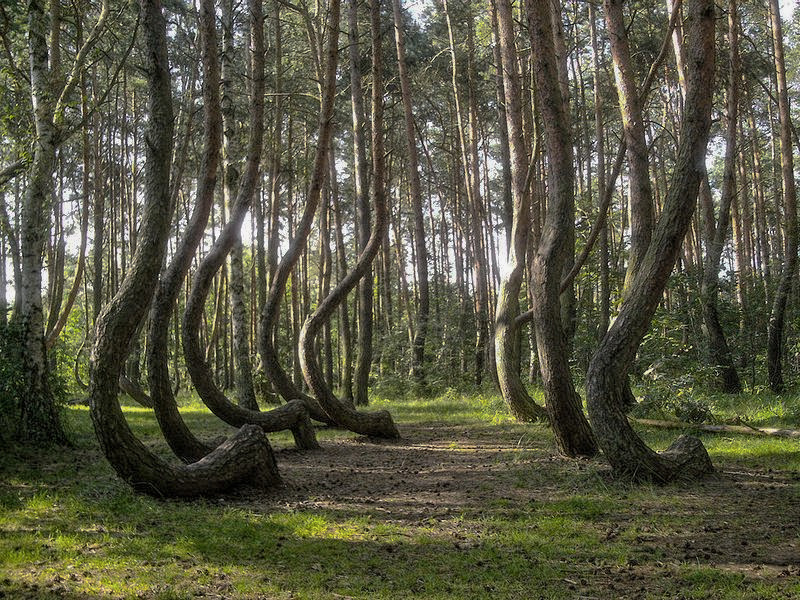
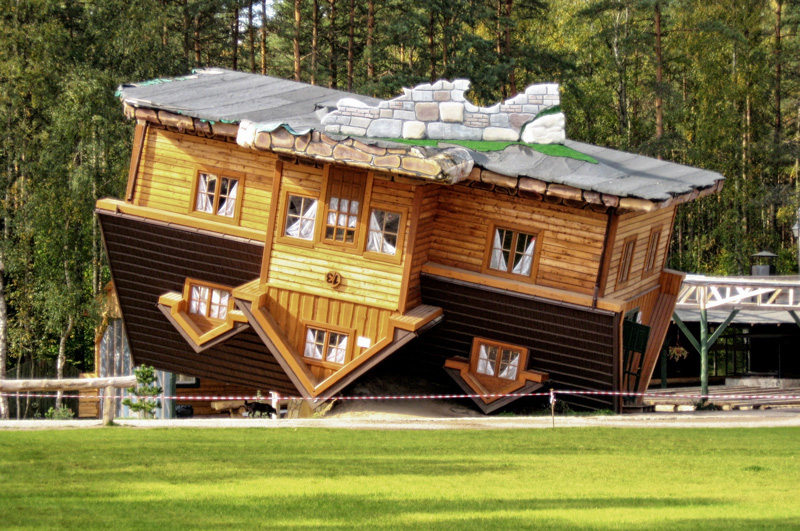
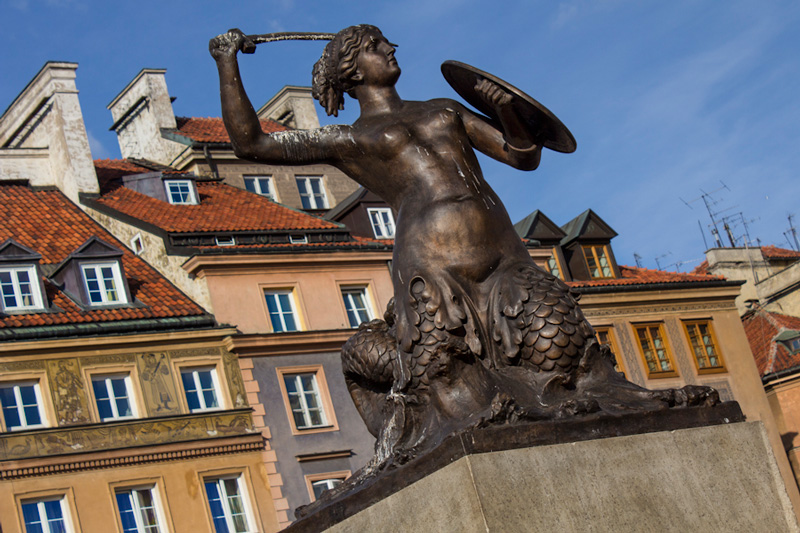
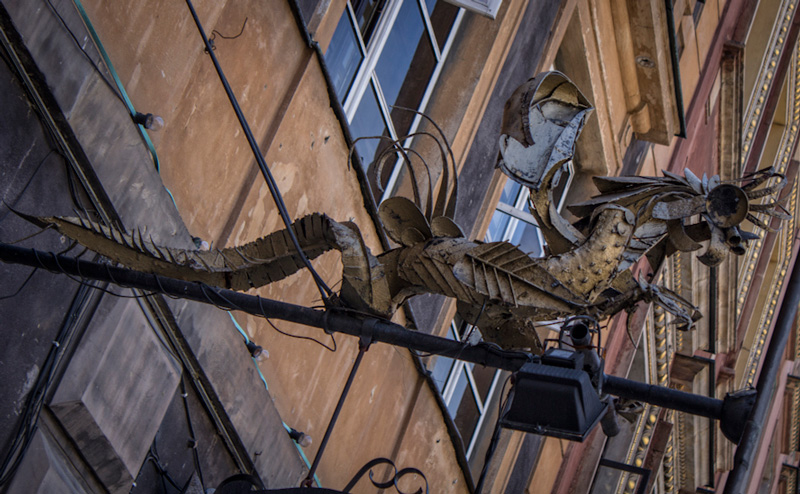
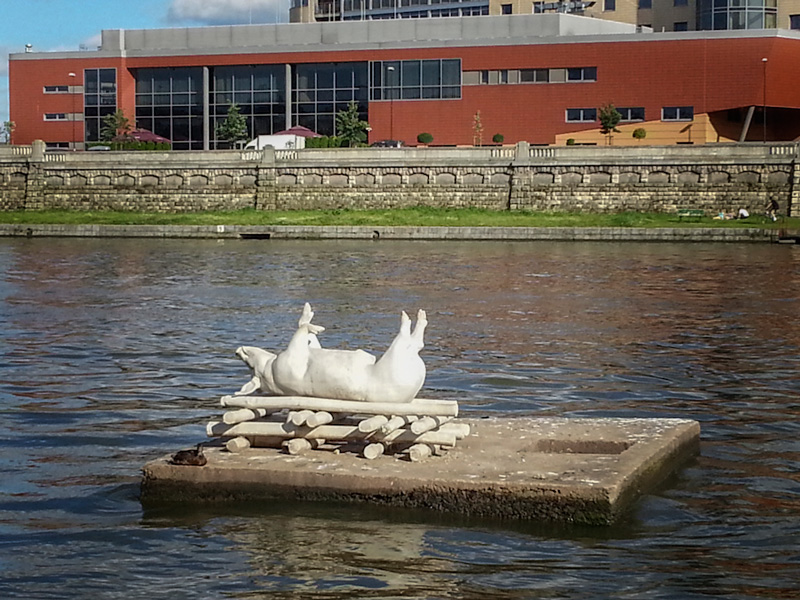
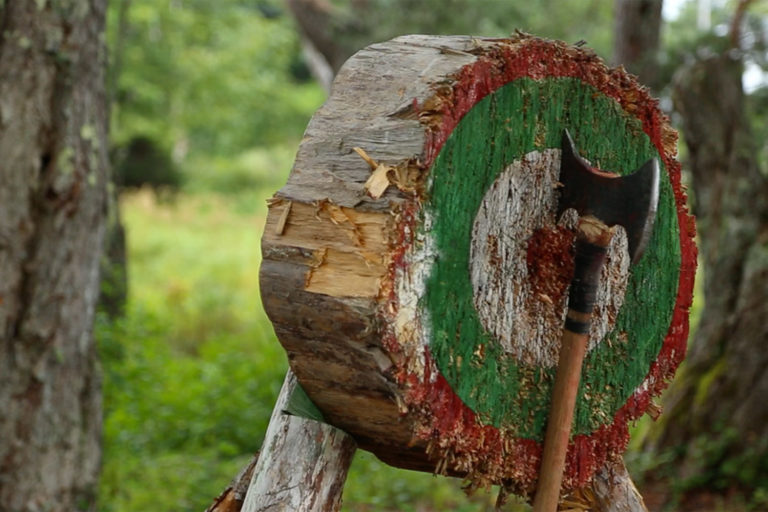
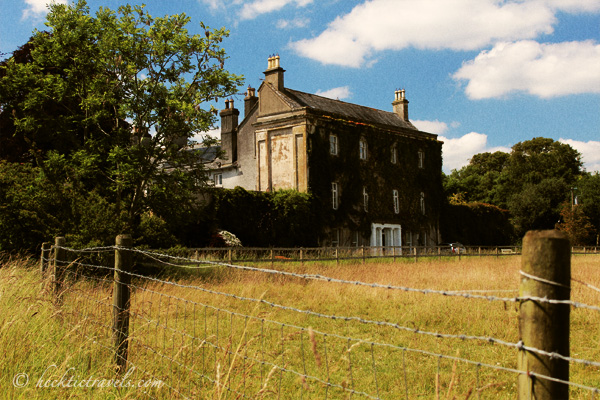
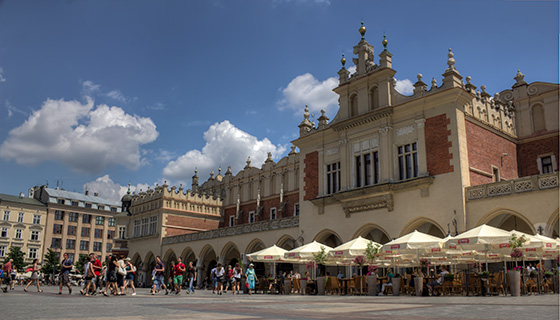
I think the pig symbolizes dinner and the river is a reminder to wash your hands before you eat. Great photos.
Logical. I like it.
That forest is SO amazing!
Goodness Dalene, you two make eastern Europe sound so fascinating – I may well have to jump continents to give it a go!
That and… “Apparently.” You never cease to make me smile here at my keyboard in this g-forsaken rice paddy. 😉
🙂 Well, you said you were looking for a change!
True. Lesseee…
Vietnam vs. Poland
Gee, I can’t think of two more opposite spots on the Planet!
Another great post about my new home country! Did you know that Warsaw also boasts the world’s skinniest house? I just found out about this recently, and it’s located not too far from me at 22 Chlodna Street. 🙂
You can take a tour inside here:
http://www.public.trzywymiary.com/domkereta/start.html
I think I heard about that! And isn’t there a super skinny one in the old town too?
A crooked building, a crooked forest .. Poland is weird indeed 🙂 Great photos, I love the one from the upside-down house. I did not have the chance yet to visit Poland but maybe one day…
How crazy. Never thought Poland to be like this. I’ve had a lot of history with Polish people never really can tell what their country is about 🙂
I think it’s one of those countries that just has to be experienced first hand. 🙂
I remember meeting an American guy from the Midwest (I think) of Polish heritage, who had grown up surrounded by Polish jokes that only made him think not-so-great things about his home country. I did my best to tell him how cool it was, and I’m pretty sure I succeeded, but I would have preferred this photo presentation to back up my claims.
Aw, poor guy! I hope he knows how cool and quirky his country is. 🙂
Weird, indeed! And very cool. I like the story about the upside down house. I can see why the builders got disoriented. It’s a little disorienting just to look at the photo.
These are indeed some quite weird places/buildings in Poland. I’m glad to see so many in one place – I usually saw just one listed 🙂 (the house is the most famous, in my opinion).
I guess every country has its curiosities, right? 🙂
What a fun post! I would love to know how those trees came to be so uniformly shaped! Interesting theories!
Weird and random is always good in my opinion 😉
This is an awesome post! I especially want to see the crooked forest and the upside down house!
Wonderful post! Poland is indeed weird and fascinating. Thanks for sharing!
Yeah, we’re a weird nation 🙂 that Jesus statue – ugh what an ugly, terrible thing!
Poland is said to have the most beautiful women in the world. Men from many countries say it when they visit. I was in Krakow one month and I cannot disagree.
Totally cool! I am so loving the quirkiness.
Sounds really interesting! I love the upside down house. Lots more reasons to get to Poland!
Oddly, there’s an upside-down house like that in Myrtle Beach, SC. At first I thought it was a Wizard of Oz theme park but apparently it’s some sort of science museum for kids. I love weird stuff like that!
I adore Poland — Krakow is my favourite city in the world (two dozen visits and counting!).
Sth about this white pig:
http://www.artboomfestival.pl/en/4/2/10187